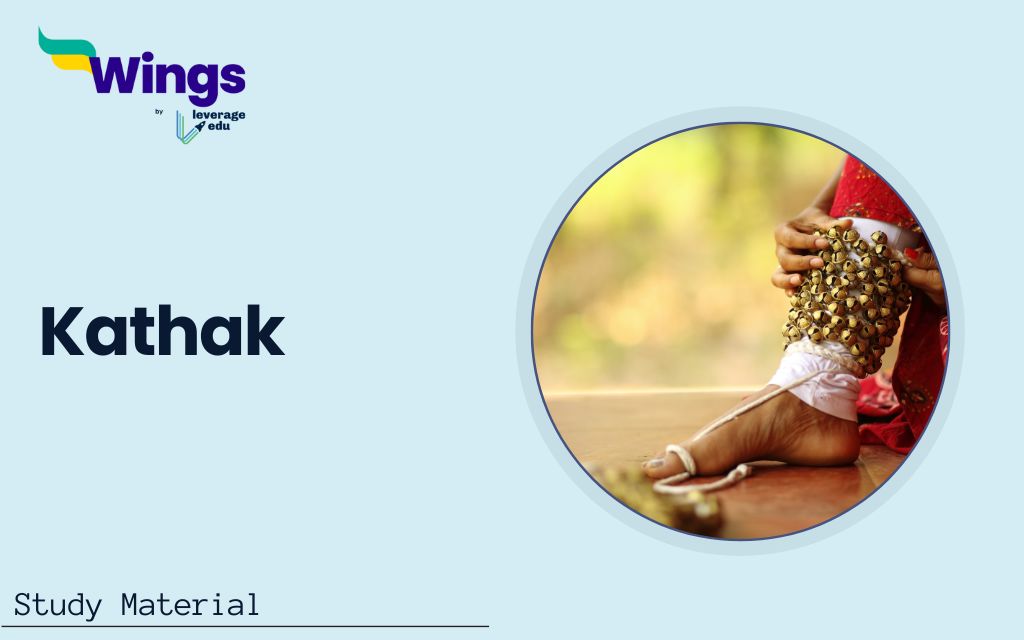Kathak is a classical dance form that originated in Uttar Pradesh. Its status as an Indian classical dance form stems from its traditional and cultural heritage. The technical and aesthetic elements of Kathak have been verbally passed down through the generations as an oral tradition. Like most Indian art forms, Kathak is based on the teacher-disciple, or Guru-Shishya Parampara.
Contents
Origin of Kathak
The Vedic Sanskrit words “Katha” (meaning “story”) and “Kathakar” (meaning “the one who tells a story”) are the sources of the term “Kathak.” Traveling Kathakars or travelling bards used dance, singing, and music to tell stories that were influenced by our ancient epics and mythology.
Kathak artists use a variety of techniques to tell stories, including elegant hand gestures, deft footwork, supple body motions, and—most importantly—intense facial expressions that convey a spectrum of emotions. Stories about the Hindu deity Krishna and his early years were included in Kathak as it developed during the Bhakti movement.
Also Read: Arts of the Mauryan Period
Facts to know About Kathak
A few facts that everyone, especially a UPSC aspirant, should know about are:
| Particulars | Details |
| Kathak meaning | Storyteller |
| Mostly practiced in | Uttar Pradesh |
| Major Gharans | Lucknow, Jaipur and Banaras |
| Key Elements | Ananda, Jugalbandi, Tarana, and Padhant |
| Style of dance | Nritta and Nritya |
| Accompanying Music | Hindustani Music (Dhrupad Music) |
| Proponents | Birju Maharaj, Sitara Devi, Lacchu Maharaj |
History of Kathak
Let us see how Kathak evolved and where it came from.
Kathak During Bhakti Movement Era
Kathak evolved as a means of expressing devotion to Lord Krishna over time. Studies reveal that Kathak came from Varanasi and extended to Lucknow and Jaipur as well as other parts of North and North West India.
According to the Lucknow tradition of Kathak, Lord Krishna materialised in the dream of his follower, Ishwari. In her dream, he told her to learn to dance as a kind of worship. Ishwari created Kathak as a dance style, and her offspring carried on the knowledge and evolution, resulting in the Lucknow Gharana of Kathak.
During the Bhakti movement, the central theme of Kathak was the eternal love of Radha, Krishna, and the milkmaids (Gopis).
Kathak During Mughal Movement Era
The Mughal invasion significantly altered Kathak dance and sparked a new wave of interest in it. The emperors, who were also its patrons, greatly fostered the Kathak dancing style in the royal palaces. Reinterpreted to highlight the dance’s sensual, expressive, and graceful aspects, kathak evolved into a refined kind of entertainment.
Kathak performances, which draw inspiration from Mughal culture, sometimes use instruments brought from that era together with Urdu Ghazals. It is therefore the only style of classical Indian dance to incorporate Persian influences.
Kathak During British Raj
The Kathak dancing style saw a downturn during the British Empire. This was primarily brought about by British opposition to Hinduism. On the other hand, Kathak represented Hinduism, and the British goal was to spread Christianity. Seductive and sensual labels were placed on the actions and facial expressions, raising doubts about the dance form’s historical roots.
Popular Kathak Dancers
Dancers who are known for Kathak from a really long time are:
- Birju Maharaj
- Durga Laal
- Damyanti Joshi
- Gopi Krishna
- Madhuri Dixit Nene
- Rani Karna
- Rohini Bhate
- Shambhu Maharaj
- Sitara Devi
- Shruti Patki
- Uma Sharma
- Veeru Krishnan
Also Read: Arts of the Indus Valley
Characteristics of Kathak dance Style
The following are the key characteristics of Kathak dance style:
- A large portion of the dance form’s technique has its roots in the Natya Shastra tradition, from where it originated.
- Among these are the divisions of the dance form into two categories: Natya (Abhinaya), which emphasises expressiveness, and Nritya, which is a pure dance performance that moves from a slower to a faster speed.
- While the Nritya is connected to Lucknow Gharana, the Nritta is connected to Benaras Gharana.
- In Kathak dance, the following order is followed:
- Amad: a dancer’s striking and dramatic entrance
- Thaat: the graceful and lighthearted dancing style
- Tora, Tukra, and Paran: Creative dance compositions
- Parhant—Soft rhythmic steps
- Tatkar: foot motion
- The footwork in Kathak dancing is very important. In addition to feet, body motions are of utmost importance.
- Even though it’s a solo dance, group dancing has become more common lately.
Current Status of Kathak Dance Form
For millennia, Kathak dance has flourished. It has become a significant dance form nowadays. It is now very well-liked and respected. Its appeal both domestically and abroad can be attributed in part to its fusion with other western and classical dance genres. It continues to be one of the most well-liked classical dance styles, even in the movie business. Even in modern times, Kathak is still an essential component of the nation’s dance festivals.
Related Posts
FAQs
During Kathak performances, a long skirt known as the Kathak Ghagra is typically worn.
Uttar Pradesh is the home of the kathak dance.
The stories in Kathak’s performance are mostly about the Hindu god Krishna (or, occasionally, Shiva or Devi), and they are taken from Indian Epics and the Bhagavata Purana.
This was all about the “Kathak”. For more such informative blogs, check out our Study Material Section, you can learn more about us by visiting our Indian exams page.
 One app for all your study abroad needs
One app for all your study abroad needs














